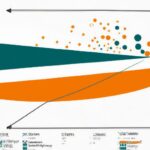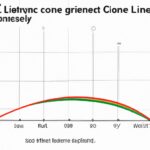Understanding the Gini coefficient’s values can reveal income distribution disparities within a population. A Gini coefficient approaching 0 signifies a more equal income distribution, while higher values indicate greater inequality. For instance, an index of 0.45 suggests moderate inequality, making it crucial to examine the context and underlying factors contributing to income disparity. Governments and policymakers utilize Gini coefficients to design targeted interventions and policies that address inequality issues effectively. By analyzing changes in Gini coefficients over time, stakeholders can assess the impact of policies on income distribution and tailor strategies for more inclusive economic growth.
Table of Contents
- Calculation method
- Factors influencing Gini coefficient
- Meaning of values
- Range of values
- Real-world examples
(Understanding the Gini Coefficient)
The Gini coefficient quantifies income inequality within a population. Ranging from 0 to 1, absolute equality is represented by 0. A value of 1 indicates complete inequality where one person holds all the wealth. Values between 0 and 0.3 signify low inequality, 0.3 to 0.4 moderate inequality, 0.4 to 0.5 high inequality, and above 0.5 severe inequality. When interpreting the Gini coefficient, it is crucial to consider government policies and socio-economic factors. A decrease in the coefficient suggests a more equal distribution of income, indicating improved economic conditions. On the contrary, an increase reflects a growing wealth gap, signaling economic challenges. Understanding Gini coefficient values aids policymakers in formulating effective strategies to address inequality issues and promote economic growth. Additionally, businesses can utilize this data to tailor marketing strategies based on income distribution within various consumer segments. By comprehending the nuances of the Gini coefficient, stakeholders can collaborate to create a more equitable society and sustainable economic environment for all.
Calculation method
When delving into the world of Gini coefficient values, understanding the calculation method is like unlocking a hidden treasure chest filled with insights. This numerical tool not only reveals income distribution but also speaks volumes about societal equality or inequality.
To comprehend how this magic number is derived, we need to peek behind the curtain and witness the mathematical dance unfolding. The Gini coefficient ranges between 0 and 1, where 0 represents perfect equality (everyone has an equal share) and 1 signifies extreme inequality (one person holds all the wealth). Picture it as a spectrum capturing the essence of fairness within a population.
The formula itself may seem intimidating at first glance, involving cumulative frequency distributions and complex arithmetic. However, at its core, it’s simply comparing areas on a Lorenz curve—like tracing lines on a map to find your destination. Each point plotted reflects real people’s incomes and their proportionate share of total income.
Emotions can run high when peering into these calculations. Imagine seeing stark disparities laid out in numbers; it’s both enlightening and disheartening. A surge of empathy may wash over you as you realize how unequal our society can be—a call to action echoing from statistical realms.
By actively engaging with these figures, we acknowledge that behind each decimal point lies a story—a family struggling to make ends meet or an individual flourishing against all odds. It’s not just math; it’s human experiences quantified for analysis.
As we crunch numbers and unravel patterns, there’s an inherent tension between objectivity and subjectivity. The cold precision of calculations meets the warm tug of empathy for those represented by data points—an intricate balance necessary for meaningful interpretation.
In conclusion, grasping the calculation method behind Gini coefficients isn’t merely about mathematical prowess—it’s about delving into social narratives written in algorithms. Through this journey of exploration, we navigate through statistics infused with humanity’s joys and sorrows—a compass guiding us towards building more equitable societies one computation at a time.
Factors influencing Gini coefficient
When pondering the factors that sway the Gini coefficient, one must delve into a complex web of societal intricacies. The essence of this statistical measure lies in revealing the disparities within income distribution. Picture a bustling cityscape where towering skyscrapers overlook dilapidated shanties, embodying stark wealth gaps.
Firstly, economic policies wield immense influence over the Gini coefficient. Taxation structures and welfare programs can either alleviate or exacerbate inequality. A nation that prioritizes equitable redistribution fosters a lower Gini index, symbolizing social cohesion and fairness. Conversely, when policies favor the affluent minority without regard for the impoverished majority, the coefficient soars like an eagle riding turbulent winds.
Moreover, technological advancements play a pivotal role in shaping income differentials. In our digital age, automation has revolutionized industries while rendering certain job sectors obsolete. This seismic shift widens the chasm between skilled technocrats commanding high salaries and blue-collar workers displaced by machines – thus amplifying income inequality evident in soaring Gini values.
Cultural norms also cast shadows on income disparity levels captured by this enigmatic statistic. Imagine patriarchal societies where gender discrimination runs rampant like an unchecked wildfire; women often face wage disparities compared to their male counterparts due to ingrained biases prevailing since time immemorial – all reflected vividly in elevated Gini coefficients mirroring systemic injustices etched deep within societal fabric.
Furthermore, globalization acts as both protagonist and antagonist on this stage of economic inequality drama illuminating divergent paths traversed by nations worldwide under its pervasive influence spotlight glaring harsh realities: some countries leverage global interconnectedness to boost prosperity for all citizens resulting in reduced Gini indices akin stars aligning harmoniously above serene horizon; others succumb sweatshops exploitation labor
Lastly but decidedly not leastly – education stands stalwart among salient triggers impacting nuances inherent within measured coefficients dancing ballet inequalities symphony life’s grand performance captivating audiences concurrently perplexing scholars policymakers alike intricate elegance mere schooling student’s socioeconomic background determines trajectory future garner breathless admiration envy equal measures secure prosperous tomorrow sigh regrets wistful echoes unlived dreams past pursuing uncertain future decade glistens promise dappled sunlight casting hopeful shadows across unfolding narratives awaiting curators usher concert denouement crescendo silence fading heartbeat final curtain drawn timeless masterpiece art dynamic equilibrium balancing darkness light harmonic resonance echoing melodies human experience vibrant hues mingling weaving tapestry woven loom ages hear whispers ancestors beckoning journey onward upward evermore into endless expanse horizons new yet unexplored forever calling bittersweet melody played orchestra cosmos resounding soul deepest trenches memory longing fulfillment merge seamless union transcendence immanence transcendent beauty immortal fleeting dance ephemeral eternity intertwined embrace sublime unity love animates creation destruction rebirth eons collide converge diverge echoing epitaphs across ocean foam sand grain sparkles golden sunset eternal sunrise cascading waves rhythm cosmic tide ebbs flows pulsating vivacity joy sorrow laughter tears heartache consolation remembrance nostalgia effervescence indivisible bond connecting disconnecting reconnecting threads braiding destiny together apart inseparable divine dichotomy paradox infinite finite singularity multiplicity boundlessness limitation perfection imperfection synchronized disharmony silent cacophony ordering chaos chaos writhes beneath serenity surface placid tempest storm yin yang balance imbalance harmony discord melody dissonance synthesis antithesis thesis infinite potentiality actuality becoming being nothing everything reality illusion dream awake asleep transient permanent oscillating still fluid resolution dissolution crystallization evaporation condensation sublimation solidification ether earth wind fire water spirit matter form content void fullness emptiness eternal temporal boundless bounded open closed expansive contracted expanding contracting imploding exploding black white gray spectrum rainbow color monochrome grayscale noyes amplitude frequency vibrations resonances consonance disjunction conjunction butterflies hurricanes microcosm macrocosm individuation collectivization isolated network nodules zero summations miscommunications understanding fragmentation integration segments holistic fractional separate unified heterogeneity homogeneity discrete continuous quantized infinitesimal multitudinal singular pluralistic atomistic relational categorical typological characteristically atypical epistemologically ontologically phenomenally totally partially fractionalised integrative systems comprising subsystems supersystems interdependent independent symbiotic parasitic cooperative competitive complementary supplementary oppositional integrated nonintegrated empty full entangled detached loneliness community solitude solipsism altruism egoism mindfulness mindlessness presence absence presents absences contingencies necessities possibility impossibility available unavailable present absent represented misrepresented suggesting implied explicit tacit known unknown familiar unfamiliar indefinitely definitively clarified modified invalidated justified proven disproven speculative factual concrete abstract temporary terminal intermediate instantaneous enduring existential contingent necessary accidental fortuitous determined random intentional unintentional designed undesigned undetermined choice chosen predetermined fated doomed salvaged lost found redeemed forsaken discernible indiscernible discernment indecision decided undecided powerful powerless potent impotent forceful strength weakness fortified vulnerable endangered thriving struggling surviving perishing resilient fragile adaptable rigid ripe rotten blooming withering seasonal perennial cyclic linear spiraling converging diverging intersections dead ends pathways meant fruitful barren fertile infertile blossoms wilt seeds germination stagnation growth decay
Meaning of values
Understanding the meaning of values in the context of interpreting Gini coefficient figures is like delving into the core beliefs that shape our societies. Values are not merely numbers or statistics; they represent the very essence of how we perceive fairness and equality in a community.
When we talk about values within the framework of Gini coefficients, we are essentially exploring what matters most to us as a society – do we prioritize equitable distribution of resources, or do we accept disparities in wealth as inevitable? These questions strike at the heart of our collective conscience and challenge us to reflect on what truly defines a just society.
Values can vary widely from one culture to another. For some, fairness may mean ensuring that everyone has access to basic necessities such as food, shelter, and healthcare. To others, it might entail fostering an environment where individual initiative is rewarded regardless of background or circumstances. These divergent perspectives underscore the complex tapestry of human values that influence how we interpret Gini coefficient results.
Emotions run deep when grappling with issues related to inequality and justice. The way we assign value to different segments of society reflects not only our economic priorities but also our moral compass. Are we willing to tolerate high levels of inequality in exchange for overall prosperity, or do we believe that true progress lies in narrowing the gap between rich and poor?
As individuals living within interconnected communities, our values shape not only our personal decisions but also have far-reaching implications for public policy and social welfare programs. The interpretation of Gini coefficient values goes beyond mathematical formulas; it requires us to confront uncomfortable truths about power dynamics and systemic biases embedded in societal structures.
Ultimately, understanding the meaning of values within the realm of Gini coefficients demands introspection and empathy. It calls upon us to consider whose voices are amplified by these metrics and whose struggles remain hidden behind statistical averages. By engaging thoughtfully with these questions, we can strive towards creating a more inclusive society where every individual’s worth is recognized regardless of their place on the income scale.
(Gini Coefficient and Lorenz Curve)
Range of values
Interpreting the Gini coefficient values opens up a world of understanding about income distribution within a population. The range of values this indicator can take on offers profound insights into societal structures and economic disparities. At its core, the Gini index ranges from 0 to 1, where 0 signifies perfect equality (everyone earns the same) and 1 represents extreme inequality (one person possesses all the wealth).
When examining Gini coefficient values between 0.2 and 0.3, we often encounter societies with relatively fair income distributions. In these communities, individuals’ earnings may vary slightly due to factors like education levels or job preferences but generally remain close together on the economic spectrum. There exists a sense of balance and opportunity for upward mobility for most members.
Moving beyond this range towards figures around 0.4 indicates growing disparities in wealth distribution within a society. Here, there might be noticeable gaps between different socio-economic groups; some people are thriving while others struggle to make ends meet. This disparity could stem from various sources such as discriminatory practices or unequal access to resources like education and healthcare.
As we approach Gini coefficients near 0.5, stark inequalities become glaringly apparent in society’s fabric. Individuals at the lower end of the income scale face significant challenges in improving their financial situations compared to those at the higher echelons who continue to amass more wealth effortlessly.
Reaching values above 0.6 paints a concerning picture of severe income inequality plaguing a community or country. Such high levels suggest that only a small fraction controls most of the resources while large segments grapple with poverty and limited opportunities daily – creating an environment ripe for social unrest and discontentment.
These numerical markers carry emotional weight as they reveal not just statistical trends but human stories behind each decimal point: families struggling paycheck-to-paycheck, dreams deferred due to lack of means, aspirations crushed by systemic inequities.
Ultimately, interpreting the range of values embodied by Gini coefficients is more than crunching numbers; it’s about recognizing our collective responsibility towards creating fairer societies where everyone has a chance to thrive regardless of their background or circumstances – where every digit reflects lives impacted by policies designed with empathy and equity in mind.
Real-world examples
When diving into the realm of interpreting Gini coefficient values, real-world examples can be like windows offering glimpses into how this statistical measure affects people’s lives. Think about a bustling city where two neighborhoods exist side by side—one affluent and gleaming with opulence, while the other is marred by poverty and neglect.
Imagine you’re in an elegant cafe sipping on your latte, watching stylishly dressed individuals stride past trendy boutiques down pristine streets. This picturesque neighborhood boasts a high Gini coefficient score—a reflection of substantial income disparity among its residents. As you take in the scene, it becomes evident that wealth here isn’t just abundant—it’s practically flaunted.
Now shift your gaze to the neighboring district. The atmosphere changes drastically; dilapidated buildings line litter-strewn alleys, weary faces pass by without making eye contact. Here, the low Gini coefficient mirrors stark inequality as families struggle to make ends meet amidst crumbling infrastructure and limited opportunities for growth.
In these contrasting landscapes lies the heart of what Gini coefficients reveal about societal disparities—they lay bare the divide between affluence and deprivation within a community. It’s not just numbers on a chart but tangible proof of how resources are distributed unevenly across different segments of society.
Consider another scenario: a company grappling with gender pay gaps despite touting itself as progressive and inclusive. By calculating their internal Gini coefficient related to salaries, they uncover uncomfortable truths—men occupying higher-paid positions compared to equally qualified women performing similar roles.
This realization prompts meaningful conversations around equity and fairness within the organization—an essential step towards rectifying systemic biases embedded in their structures. The emotional impact reverberates through employees who now see concrete evidence of inequality laid bare before them.
Real-world examples serve as poignant reminders that behind every statistic lies a story—a narrative woven from individual experiences shaped by economic forces at play. Interpreting Gini coefficients transcends mere analysis; it delves deep into human lives touched by inequity or uplifted through equitable distribution of resources.













